What is Income Elasticity of Demand?
An increase in the income of consumers increases the demand for the product even if the price remains constant. The responsiveness of quantity demanded with respect to the income of consumers is called the income elasticity of demand.
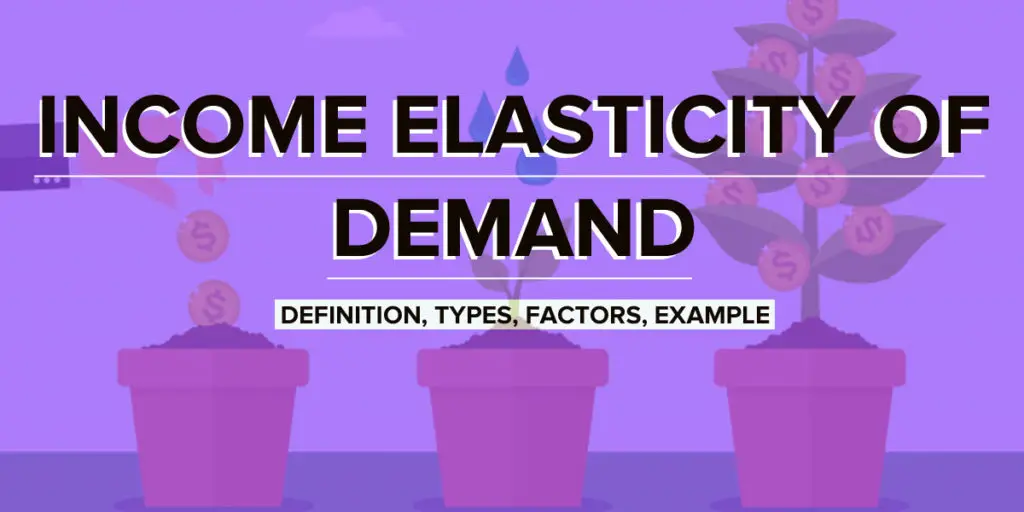
Table of Content [Show]
Similar to the price elasticity of demand, the income of consumers is also an important determinant of the demand for the product.
Also Read: Price Elasticity of Demand
Income Elasticity of Demand Definition
The following are some important popular definitions of income elasticity of demand:
Income elasticity of demand means the ratio of the percentage change in the quantity demanded to the percentage in income.Watson
The responsiveness of demand to change in income is termed as income elasticity of demand.Richard G. Lipsey
Income Elasticity of Demand Formula
Mathematically, the income elasticity of demand can be stated as:
Where,
Percentage change in quantity demanded =

Percentage change in income =

Thus, the formula for calculating the price elasticity of demand is as follows:

Where,
Q is original quantity demanded
Q1 is new quantity demanded
∆Q = Q1–Q
Y is original income
Y1 is new income
∆Y = Y1 – Y
Income Elasticity of Demand Example
Let us understand the concept of income elasticity of demand with the help of an example.
Example: Suppose the monthly income of an individual increases from 5,000 to 15,000. Now, his demand for clothes increases from 35 units to 70 units. Calculate the income elasticity of demand.
Solution: Given that:
Y = 5,000 Y1= 15,000
∆Y = 15,000-5,000 = 10,000
Q = 35 units
Q1 = 70 units
∆Q = 70 – 35 = 35
The formula for calculating the income elasticity of demand is:

Substituting the values,

Also Read: Cross Elasticity of Demand
Types of Income Elasticity of Demand
Similar to the types of price elasticity of demand, the degree of responsiveness of demand with a change in consumer’s income is not always the same.
Types of Income Elasticity of Demand
- Positive income elasticity of demand
- Negative income elasticity of demand
- Zero income elasticity of demand
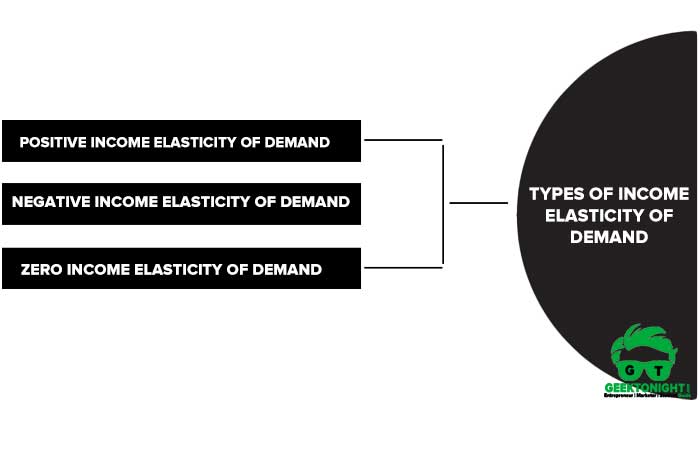
Positive income elasticity of demand
When a proportionate change in the income of a consumer increases the demand for a product and vice versa, income elasticity of demand is said to be positive. In case of normal goods, the income elasticity of demand is generally found positive, which is shown in Figure.
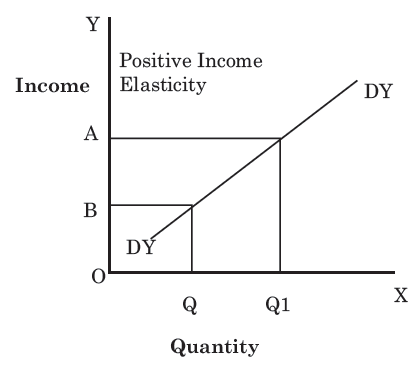
In Figure, DYDY is the curve representing positive income elasticity of demand. The curve is sloping upwards from left to the right, which shows an increase in demand (OQ to OQ1) as a result of rise in income (OB to OA).
Types of positive income elasticity of demand
There are three types of positive income elasticity of demand, namely unitary income elasticity of demand, less than unitary income elasticity of demand, and more than income elasticity of demand. Let us discuss them as follows:
Three types of positive income elasticity of demand
- Unitary income elasticity of demand
- Less than unitary income elasticity of demand
- More than unitary income elasticity of demand
Unitary income elasticity of demand
The income elasticity of demand is said to be unitary when a proportionate change in a (increase) for a product. For example, if there is 25% increase in the income of a consumer, the demand for milk consumption would also be increased by 25%. Thus ey = 25/25 =1.
Less than unitary income elasticity of demand
The income elasticity of demand is said to be less than unitary when a proportionate change in a consumer’s income causes comparatively less increase in the demand for a product. For example, if there is an increase of 25% in consumer’s income, the demand for milk is increased by only 10%. Thus ey = 10/100 = 0.1 < 1.
More than unitary income elasticity of demand
The income elasticity of demand is said to be more than unitary when a proportionate change in a consumer’s income causes a comparatively large increase in the demand for a product. For example, if there is an increase of 25% in consumer’s income, the demand for milk is increased by only 35%. Thus ey = 35/25 = 1.4 > 1.
Negative income elasticity of demand
When a proportionate change in the income of consumer results in a fall in the demand for a product and vice versa, the income elasticity of demand is said to be positive. It generally happens in the case of inferior goods.
For example, consumers may prefer small cars with a limited income. However, with a rise in income, they may prefer using luxury cars.
Figure shows the negative income elasticity of demand
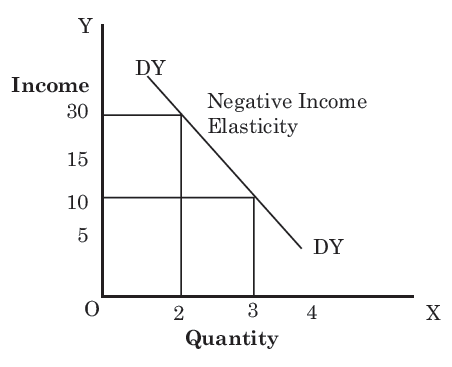
In Figure, DYDY is the curve representing negative income elasticity of demand. The curve is sloping downwards from left to the right, which shows a decrease in the demand as a result of a rise in income. As shown in Figure, with a rise in income from 10 to 30, the demand falls from 3 to 2.
Zero income elasticity of demand
When a proportionate change in the income of a consumer does not bring any change in the demand for a product, income elasticity of demand is said to be zero. It generally occurs for utility goods such as salt, kerosene, electricity. Figure 5.15 shows the zero income elasticity of demand:
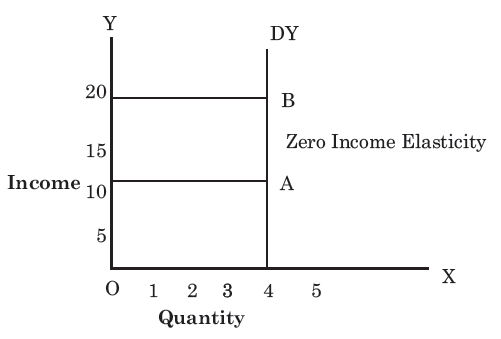
In Figure, DYDY is the curve representing zero income elasticity of demand. The curve is parallel to Y-axis that shows no change in the demand as a result of a rise in income. As shown in Figure 5.14, with a rise of income from 10 to 20, the demand remains the same i.e. 4.
Also Read: Elasticity of Supply
Factors Affecting Income Elasticity of Demand
As discussed earlier, the income elasticity of demand for a product reflects the change in the quantity demanded as a result of change in consumer’s income. However, the income elasticity differs for different products as it depends on various factors. Some of these factors are listed in Figure.
Factors Affecting Income Elasticity of Demand
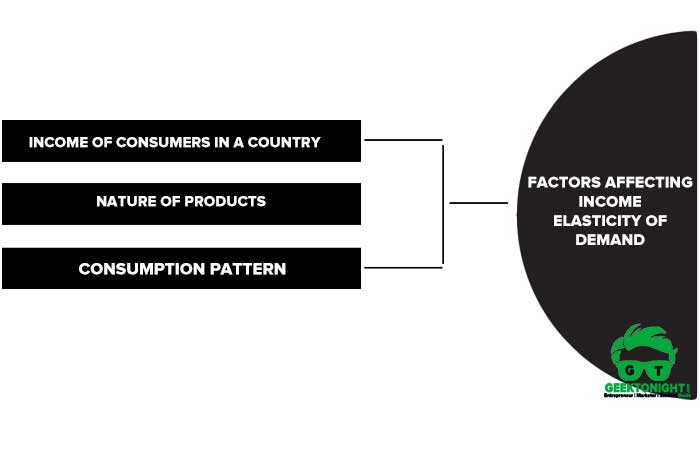
Income of consumers in a country
In any country, the income level of consumers is not the same. Therefore, consumers spend on the basis of not only on their need but also their purchasing capacity. The purchasing capacity of consumers increases with a rise in their income.
For example, a consumer with a low income may prefer using public transport for commuting. However, with a rise in income, he/she may buy a two-wheeler for the same purpose.
Nature of products
The nature of products being consumed by consumers also has an important influence on income elasticity.
For example, basic goods used on a day to day basis, such as salt, sugar, and cooking oil, is elastic. Even with a rise in the income of a consumer, the demand for such products does not change and remain inelastic.
Consumption pattern
With a rise in income, people quickly change their consumption patterns. For example, people may start buying high priced products with an increase in their income. This leads to an increase in the demand for the products in the market. However, once the consumption pattern is established, it becomes difficult to lower the demand in case of a decrease in income.
For example, a consumer may buy a two-wheeler that runs on petrol as a result of a rise in his/her income. However, over a period of time, in case his/her income falls, it will be difficult for him to reduce the consumption of petrol.
Leave a Reply